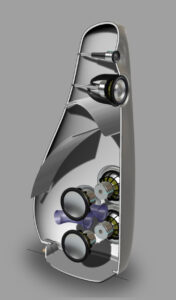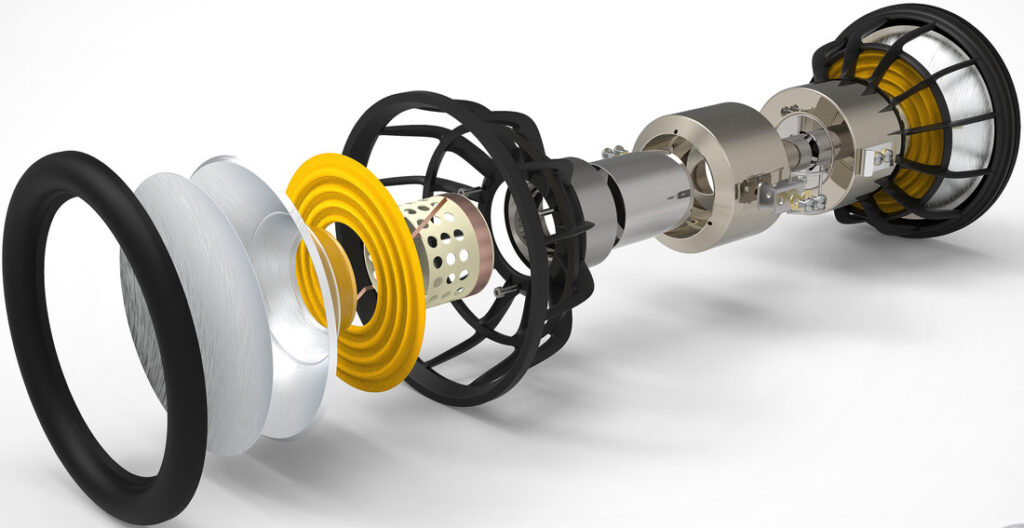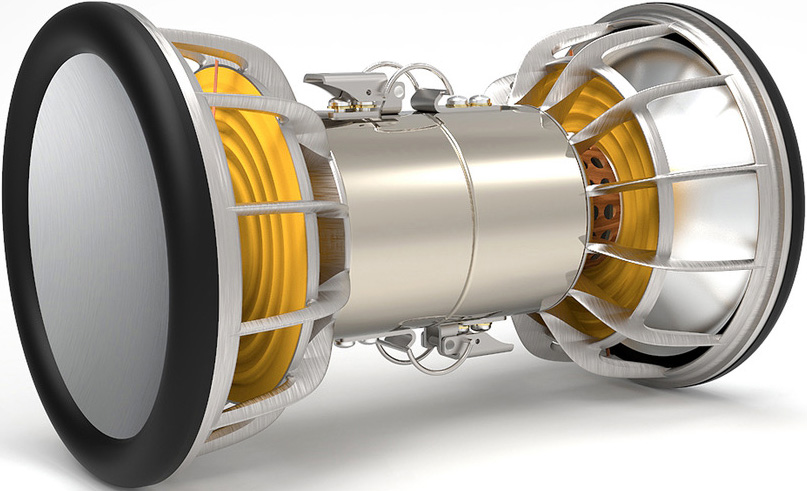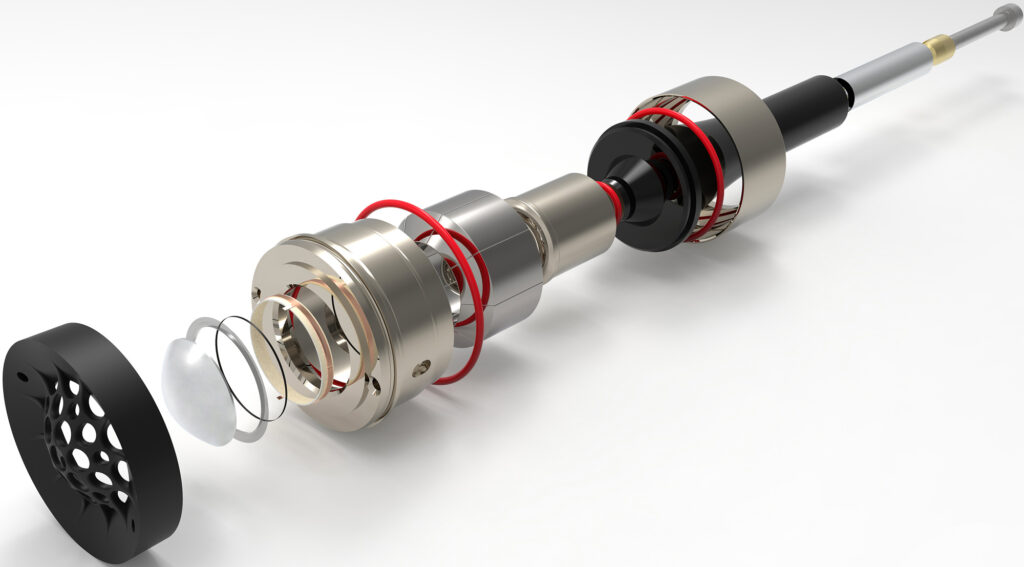First impressions
OK, let’s start with immediate first impressions. I initially placed the Kayas about a foot closer together (9 feet apart) than the placement of my Giyas (10 feet apart), but otherwise I left everything else the same, including room correction settings, speaker cable tweaks, etc. Note that my room is set up “width-wise”, and each speaker was still 7-8 feet (depending on the specific placement used) from side walls, so side wall reflections are never an issue for me.
I was immediately smitten, the reasons why are obvious. First, the shorter Kayas aligned exactly with my ears when sitting in my listening chair, resulting in an amazing sonic picture. Second – and this will be a main point in this review – the midrange performance of the Kayas is a vocal lover’s dream, along with other qualities.
Adjustments, equipment pairings and tweaks
After a quick initial one-hour listening session, I started making adjustments. First, I installed the spikes that came with the speakers. Somewhat to my surprise, the addition of the spikes added precision and clarity. I say “somewhat to my surprise” because the addition of spikes to my Giyas had a minimal effect, even though my room is carpeted. That experience with the Giyas was way different from my experience with other speakers, where spiking seemed to invariably improve the presentation. I expected a similarly minimal result with the Kayas, primarily because of the extremely rigid and resonance-free cabinets that the Giya and Kaya have in common. Instead, the Kayas did benefit from the addition of their spikes, presumably because they are much lighter than the Giyas. YMMV.
I also quickly realized that despite their smaller size, the Kayas easily filled my room with a full orchestra when that was appropriate. I moved them to give them the same separation as my Giyas and didn’t lose any of the sonic portrait. You’d need a huge room – a lot bigger than 30’ x 25’ – before you’d worry about the Kaya’s ability to fill it.
Similar to the Giyas, the Kayas have wide dispersion, so you can really experiment with toe-in. I normally set my Giyas to “cross” sonically one to two feet in front of the listening position, and I proceeded to do the same thing with the Kayas. The effect was very similar: it created the very solid illusion of a soundstage in the front of the room. To be clear, what I’m referring to here is the difference between a “headphone” effect when great speakers are pointed directly at the listener’s ears, versus the “stage” effect when they cross in front of the listener. Note that some speakers may sound better without toe-in at all, or in some other completely unconventional setup. I once heard a demo of speakers that were set up pointing directly at each other!
It didn’t matter which of my amps I used – at least from a power standpoint. The brute force of the Electrocompaniet Nemos (600 wpc), the highly refined 150 wpc of the Gryphon Antileon Evo, and the 100 wpc Marantz multichannel receiver I inserted all did a more than adequate job in driving the Kayas. However, subtlety of detail was another story. The Kayas clearly benefit by being paired with high quality equipment. This is obviously not a surprise, as most high quality equipment benefits from better supporting equipment. However, the Kaya’s midrange moved from being merely fabulous to being clearly exceptional when used with the Gryphon Antilleon Evo in pure class A mode. Let me expound…
Perfect balance starts with your core
One challenge with multi-driver speakers that have extreme and detailed extension at the uppermost and lowest ranges (like the Giyas), is creating an integrated audio experience – a “wholeness” – that mimics a live performance. Live performances in good venues let you hear the music as a whole, while also enabling you to focus on individual instruments. You can focus your attention on the timbre of the double bass, but then shift it to the overall impact of the entire orchestra. Each way of listening to the music can be satisfied. In my view, this is a major reason why many aficionados say that midrange reproduction is the most critical: that if you don’t get that right, nothing sounds right. The midrange is where most voices and instruments operate, and of course, it’s in the middle of our hearing range! That’s why I refer to it in this review as the “core.” Just as an athlete needs excellent core strength regardless of what sport they engage in, a speaker that doesn’t have at least “good” midrange performance will sound strange even if the upper and lower extremes are actually reproduced very well.
I am pleased to report that the Kaya 90 has have a midrange that is among the best I’ve ever heard, improving upon the midrange of the original Giya G1, which was no slouch. To me this was especially evident in vocals. Nora Jones never sounded so simultaneously breathy and solid; Tina Turner never sounded so raw and naturally raspy; Pavarotti never so emotive and powerful. The sense of presence of the performer was palpable.
Solid core, quick reflexes
Some high-end speakers sound great when you’re listening to emotive vocal music, but sound flat and slow when listening to uptempo “snappy” music. This is definitely not the case with the Kaya 90. In general, the entire Vivid lineup delivers a vibrant, accurate rendering of performances that are meant to be lively, and in my opinion, Vivid speakers are among the truest high-end speakers when it comes to replicating proper pace, rhythm and timing. Pick anything with drive and gusto and the Vivid Kaya 90 will deliver that drive and gusto in spades. In my experience, my own Vivid Giyas are the most dynamic of the entire Vivid lineup, but the Kaya 90 is pretty darn close, even though its presentation is a bit “richer”.
How deep is your love?
Did I hear someone say “soundstage”? I already made reference to the Kaya 90’s ability to fill a room. It doesn’t just “fill” the room, but does it with a very wide and accurate soundstage. This was impressive on its own, but the soundstage depth was, if anything, even more impressive. At this point I need to come back to the Gryphon Antileon Evo operating in pure class A. It’s hard for me to distinguish the Gryphon’s contribution to the depth of the soundstage, but there’s no question that the Kaya 90 will reproduce that depth if you pair it with appropriate amplification. The amplification can be modestly-powered tube amps or powerful solid state amps, but if the amp facilitates it, the Kaya will give you a gloriously wide and deep soundstage.
Compared to the Vivid Giya G1
Both the Kaya 90s and the Giyas are full-range floor standers, and if you didn’t hear the Kaya 90s in direct comparison to the Giyas you would never feel a lack of anything. Let’s break it down. Midrange and Treble: I have to say that the Kaya 90’s midrange is more emotive and realistic than the original version of the Giya G1 (I did not have the later version of the Giya to compare). As a result, the Giyas come across as slightly “brighter”, not so much because the upper extremes are more emphasized, but because the midrange isn’t quite as “rich”. Bass and PRAT: Of course, the Giya’s bass drivers are much bigger and have the capacity to be more potent – almost too potent in some cases. Its bottom end is more extended and powerful, and as fast as the Kaya 90, so you can also get the impression of more energy and better PRAT. This is a bit deceptive as the Kaya 90s are very rhythmic and energetic. It’s just that the Giya goes so low while at the same time being so explosive that it makes most other speakers seem to lag by comparison. Soundstaging: Both these speakers are soundstaging champs. Comparing the two head-to-head makes the Kaya 90 seems even more impressive, since it fills the room with properly placed performers as well as the Giya, which is a much more physically imposing speaker.
To conclude
This review may seem short for such excellent speakers, but there’s no point in being repetitive or indirect. The combination of traits described above makes the Kaya 90 a true high end speaker, competitive with anything in its price range and better (IMHO) than many in its price range. It should scare the bejesus out of a slew of more expensive speakers. In fact, even though I’m an insane bass fanatic, I may have thought twice about buying the Kaya 90s instead of the Giya G1 if the Kaya had been available at the time. (I understand that the later versions of the Giyas have incorporated the Kaya 90’s type of midrange.) Unreservedly recommended, even if you have a lot more money to spend.
Copy editor: Dan Rubin
Manufacturer’s Comment:
Everyone at Vivid is thrilled with Ed’s glowing impressions of our new KAYA 90. The improvements implemented in a number of areas of the GIYA G1 in its evolution to the G1 Series 2 absolutely influenced the designs of the KAYA series models that followed. Dare we say, if Ed likes what he’s hearing in the KAYA 90 (and clearly he did), he should audition the Series 2 versions of the GIYAs he owns at his own risk!”
Todd Sutherland, Vivid Audio U.S.
- ← Previous page
- (Page 2 of 2)





First, it is a real pleasure to see you reviewing again. I have always felt that you were one of Dagogo’s real strengths. Nice review, and it is always easier to write a good review when the product speaks to you.